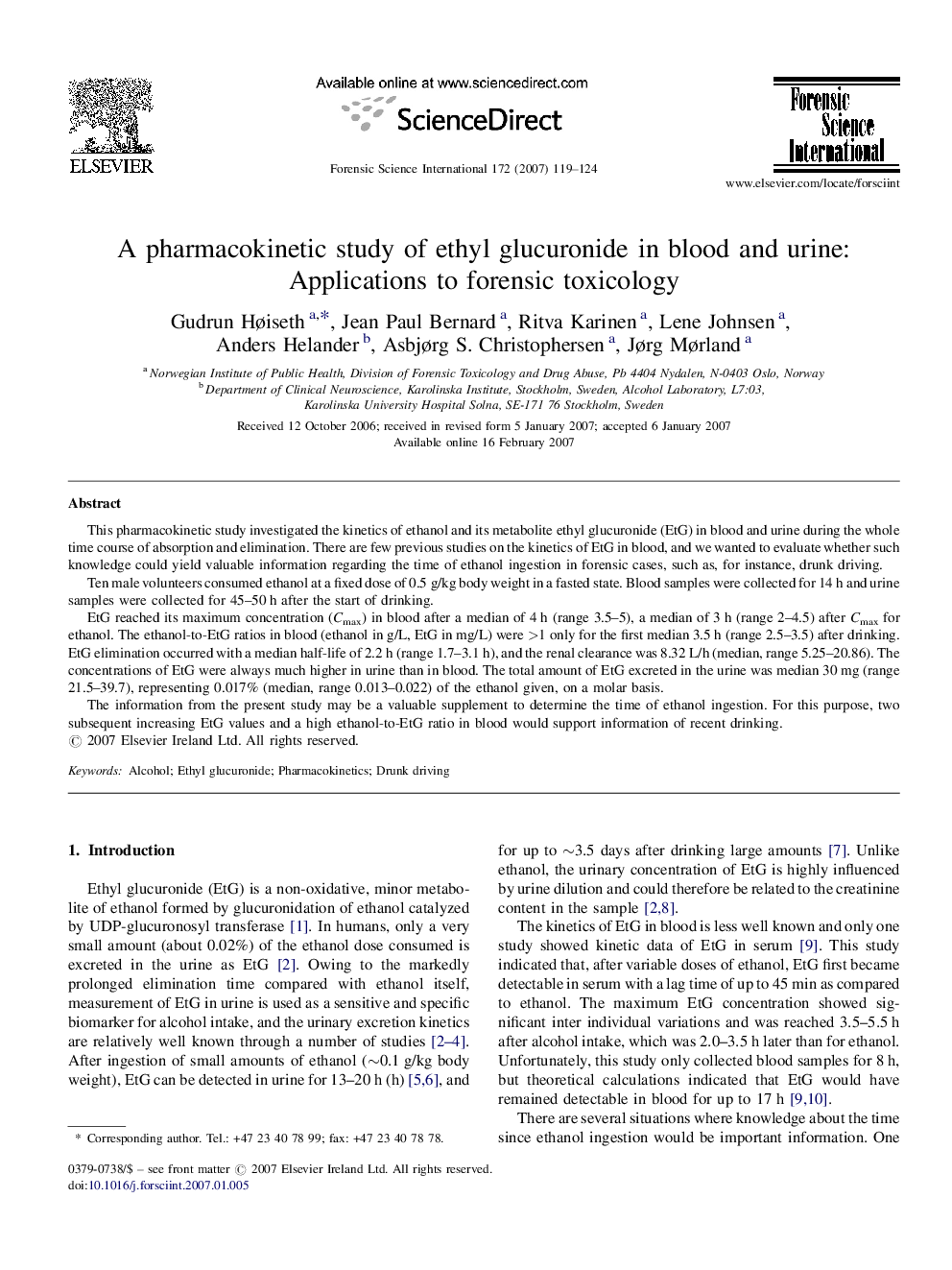| Article ID | Journal | Published Year | Pages | File Type |
|---|---|---|---|---|
| 98073 | Forensic Science International | 2007 | 6 Pages |
This pharmacokinetic study investigated the kinetics of ethanol and its metabolite ethyl glucuronide (EtG) in blood and urine during the whole time course of absorption and elimination. There are few previous studies on the kinetics of EtG in blood, and we wanted to evaluate whether such knowledge could yield valuable information regarding the time of ethanol ingestion in forensic cases, such as, for instance, drunk driving.Ten male volunteers consumed ethanol at a fixed dose of 0.5 g/kg body weight in a fasted state. Blood samples were collected for 14 h and urine samples were collected for 45–50 h after the start of drinking.EtG reached its maximum concentration (Cmax) in blood after a median of 4 h (range 3.5–5), a median of 3 h (range 2–4.5) after Cmax for ethanol. The ethanol-to-EtG ratios in blood (ethanol in g/L, EtG in mg/L) were >1 only for the first median 3.5 h (range 2.5–3.5) after drinking. EtG elimination occurred with a median half-life of 2.2 h (range 1.7–3.1 h), and the renal clearance was 8.32 L/h (median, range 5.25–20.86). The concentrations of EtG were always much higher in urine than in blood. The total amount of EtG excreted in the urine was median 30 mg (range 21.5–39.7), representing 0.017% (median, range 0.013–0.022) of the ethanol given, on a molar basis.The information from the present study may be a valuable supplement to determine the time of ethanol ingestion. For this purpose, two subsequent increasing EtG values and a high ethanol-to-EtG ratio in blood would support information of recent drinking.
